YZXStudio fast car charger 127W ZC916
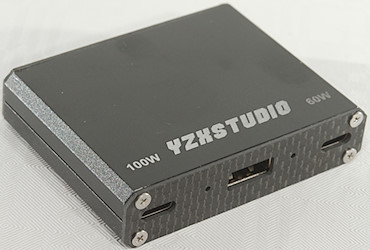
Official specifications:
-
Input voltage: 11-32V, 12-20V is recommended, the maximum request is 90-130W.
-
Output: 5V 4.8A (2.4A on each output)
-
Output interface: 3-port version 3 ports support maximum 12V30W output, total power is 90W.
-
The 2-port USB-A port supports a maximum output of 12V30W. When the USB-C port input is higher than 15V, it supports a maximum output of 20V5A100W, and the total power is 130W
-
Input undervoltage: Stop output below about 10.5V and micro power standby to prevent over-discharge of car battery.
-
Output ripple: less than 100mV.
-
Size: 53 * 67 * 16mm
I got it from ebay.com dealer: power116
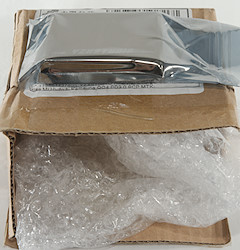

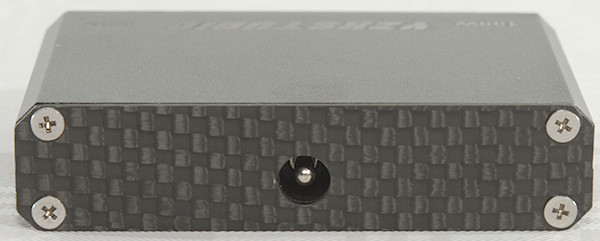

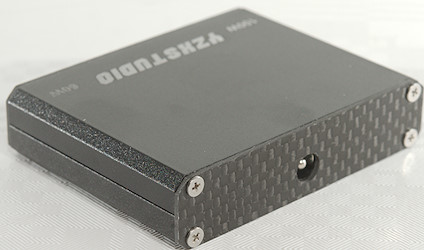

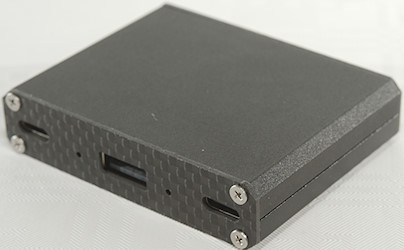
Measurements
-
Input connector is barrel type ø5.5/2.5mm
-
Power consumption when idle at 12V is 2.1mA
-
100W PD output is coded with: 5V 3A, 9V 3A, 12V 3A, 15V 3A, 20V 5A
-
100W output also supports QC3, Huawei-FCP, Huawei-SCP, Samsung-AFS
-
60W PD output is coded with: 5V 2A, 9V 3A, 12V 3A, 15V 3A, 20V 3A, PPS 3-5.9V 3A, PPS 3-11V 3A
-
60W PD output do not have a boost converter.
-
60W PD output 12V is disabled at 11.0V and enabled at 11.6V input.
-
60W PD output 15V is disabled at 13.6V and enabled at 15.1V input.
-
60W PD output 20V is disabled at 19.3V and enabled at 20.8V input.
-
60W output also supports QC3, Huawei-FCP, Huawei-SCP
-
QC and 60W output is partially shared, this means only one can be used when needing voltages other than 5V.
-
Minimum QC3 voltage is 3.7V
-
It has a two dual color leds behind small holes on the front.
-
Weight: 72g
-
Size: 67.5 x 52.4 x 15 mm
Measurements
100W output
QC output
60W output
Load test
100W output
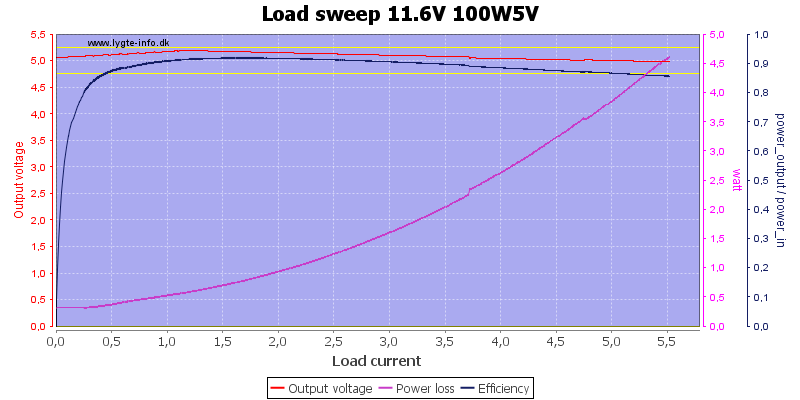
The 100W output is generally rated at 3A, except 20V that is rated at 5A, but it will deliver 5.5A at 5V. There is some cable compensation.
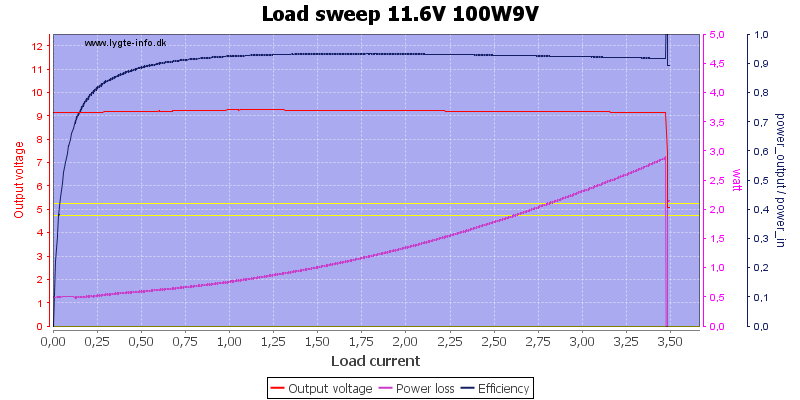
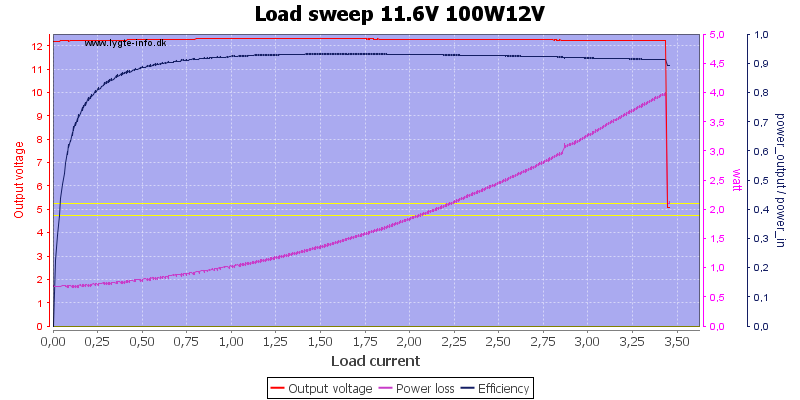
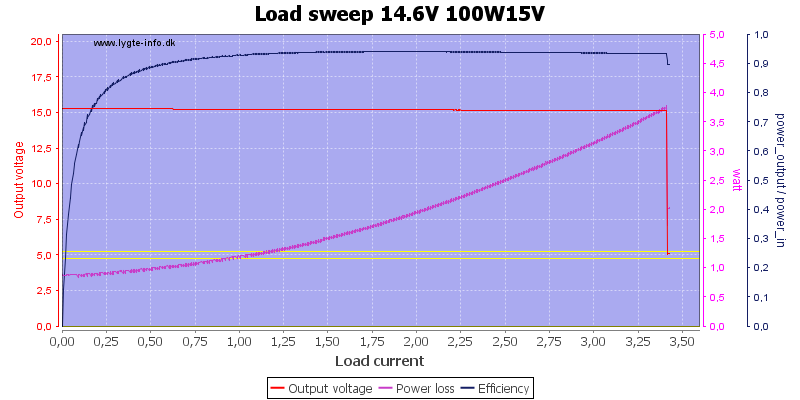
At 9V, 12V and 15V the current limit is more sensible at 3.4A to 3.5A.
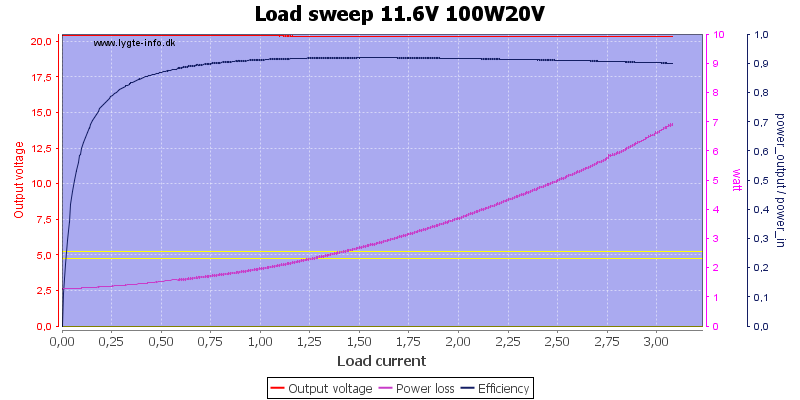
With 11.6V input it will deliver 20V output, here limited to about 3A due to my power supply (The one I use here can “only” supply 6A).
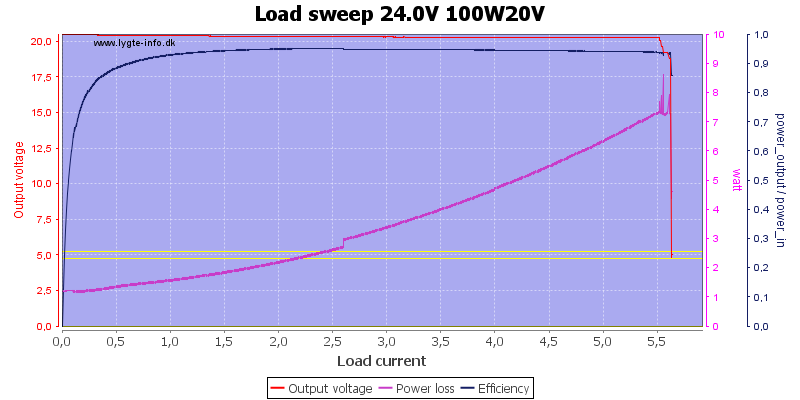
Increasing the input voltage and it is possible to deliver 5.5A output at 20V.
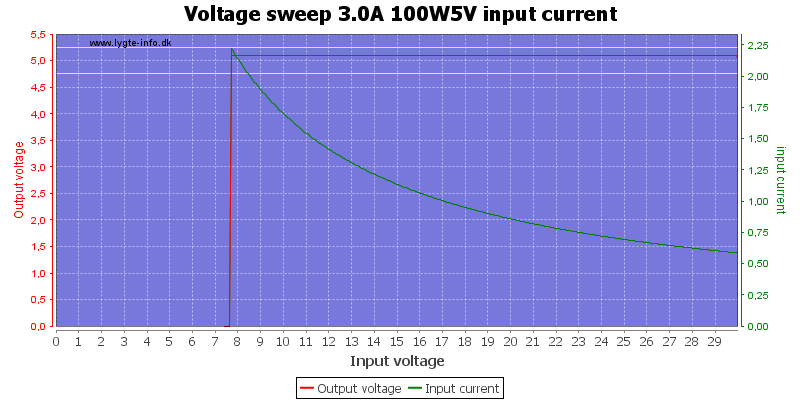
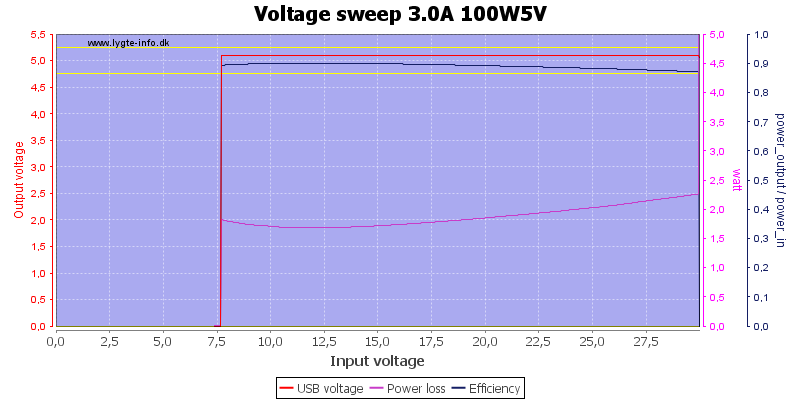
The 5V output can be maintained down to below 8V at 3A load (The specified 10.5V protection is not present).
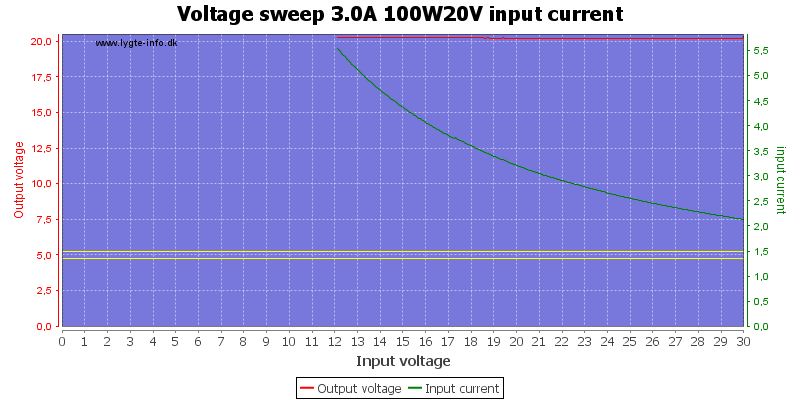
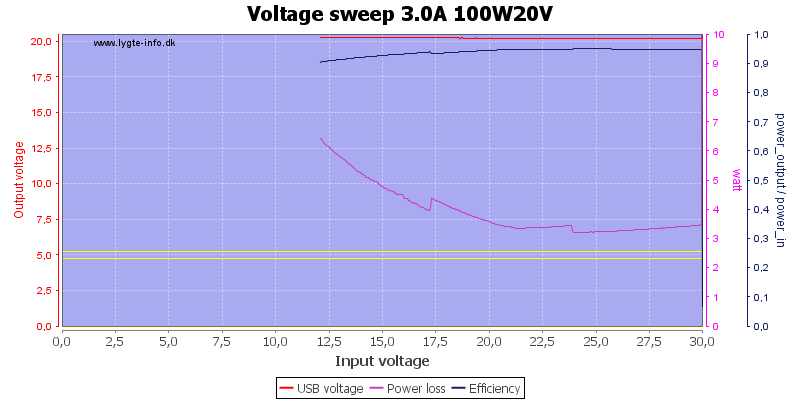
The 5V output can be maintained down to below 12V at 3A load. The converter switches from buck (reduce voltage) to boost (increase voltage) during during this voltage sweep.
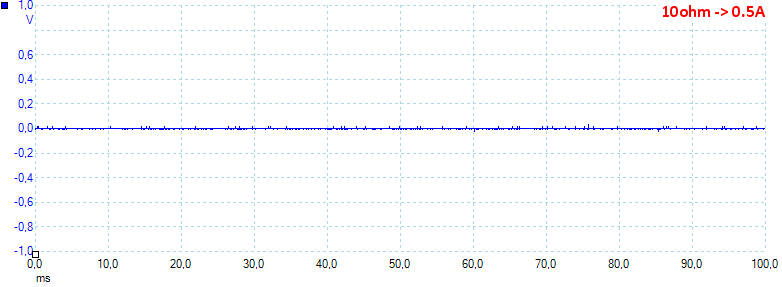
Noise at 0.5A output is 3mV rms and 118mVpp
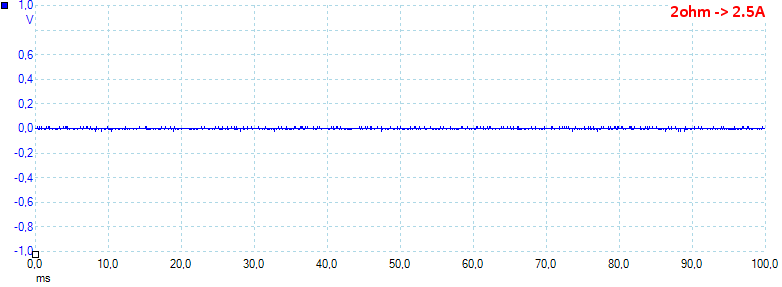
Noise at 2.5A output is 16mV rms and 198mVpp
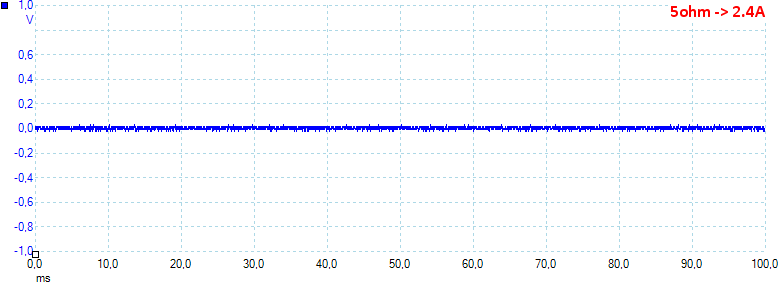
Noise at 12V 2.4Aoutput is 12mV rms and 227mVpp
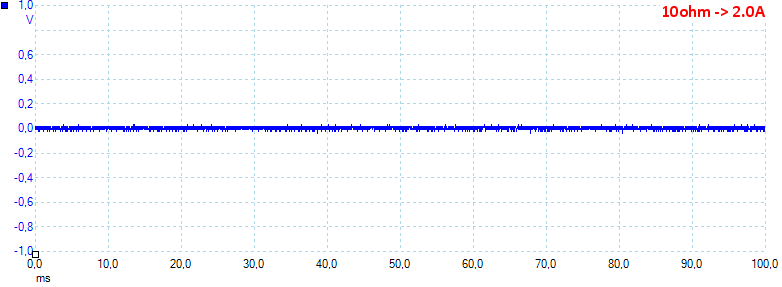
Noise at 20V 2A output is 14mV rms and 182mVpp
QC output
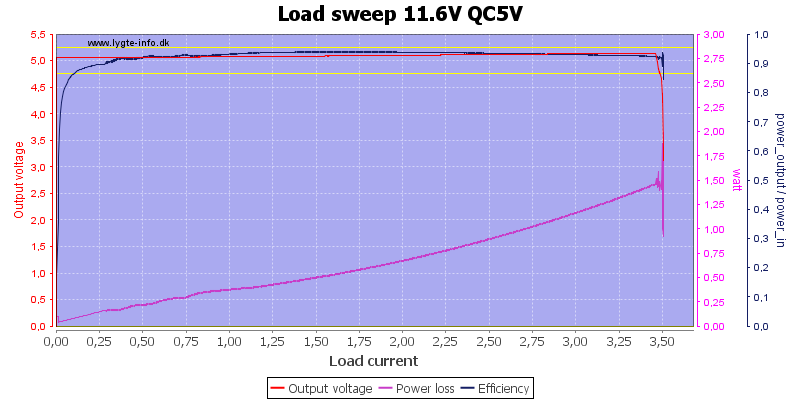
The QC output can deliver 3.5A at 5V
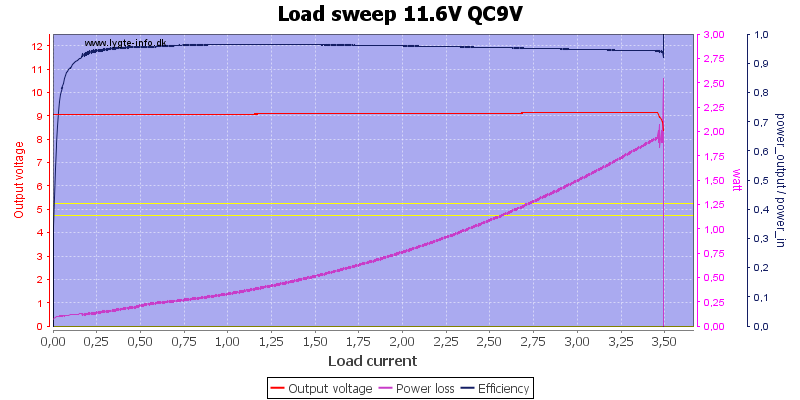
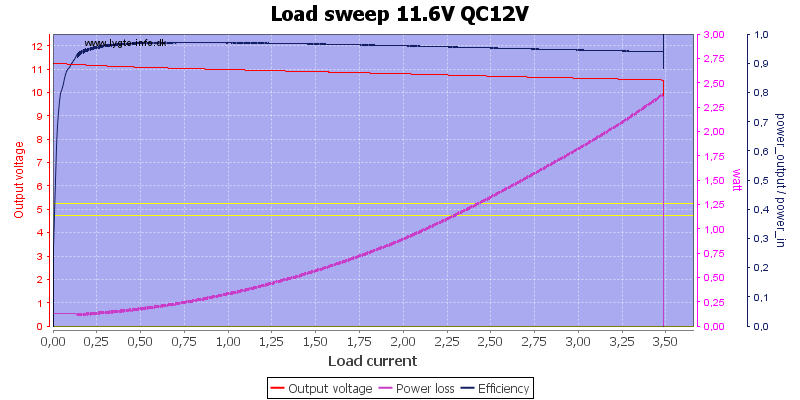
And the same at 9V and 12V, the 12V output is low here due to the low input voltage.
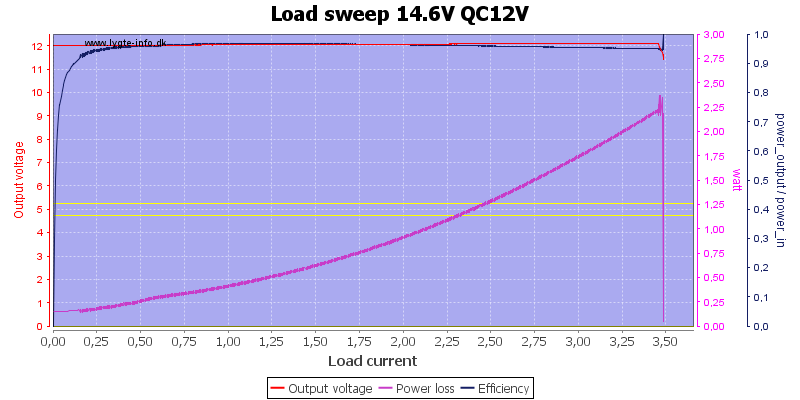
Increasing the input voltage a bit and it will be 12V, current is not changed.
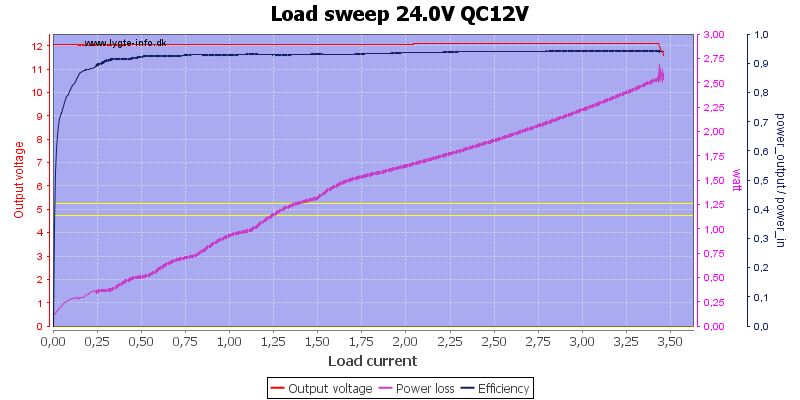
With 24V input the output is still the same, but the power loss has increased.
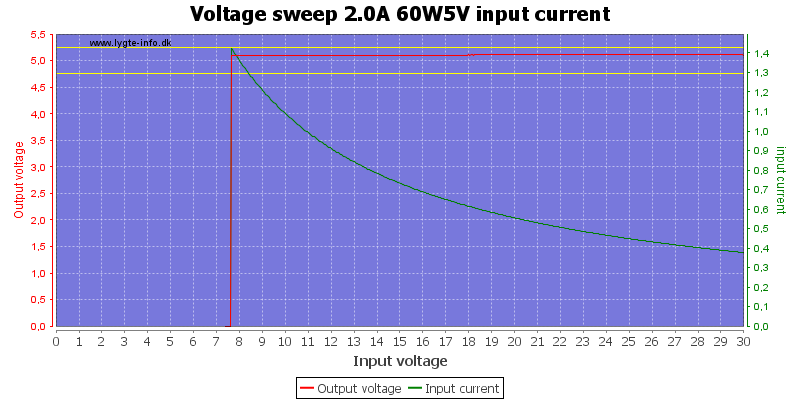
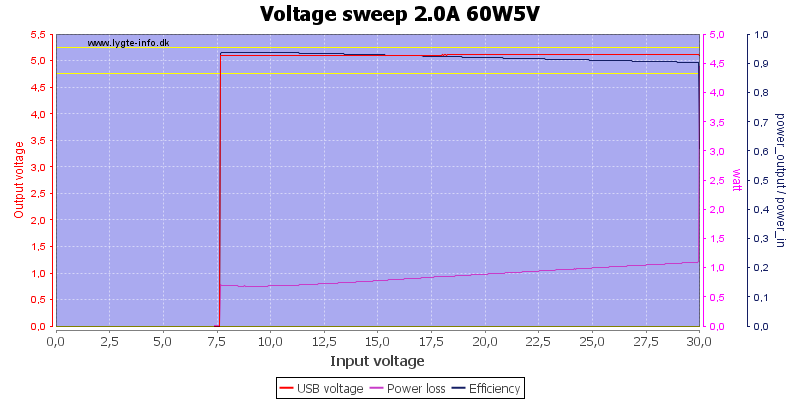
At 2A output the 5V will work down to about 7.5V
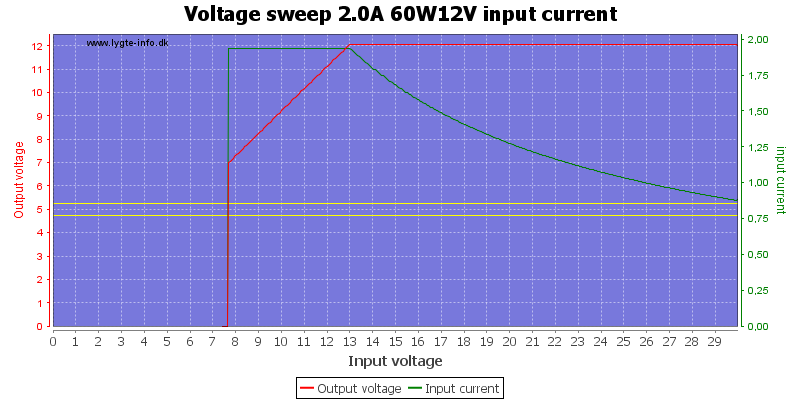
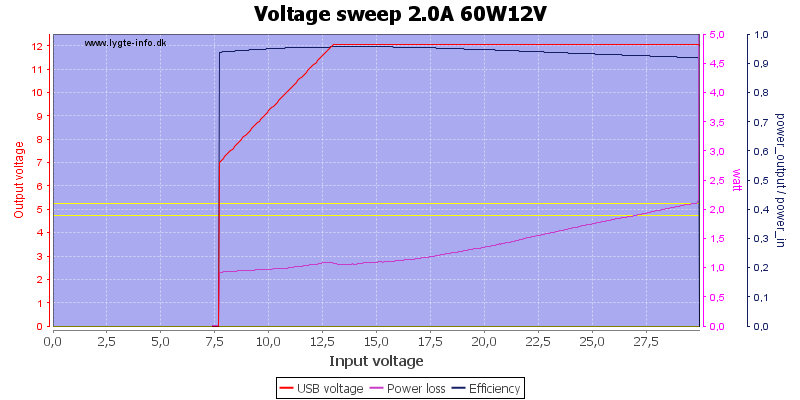
The 12V output works down to 13V

Noise at 0.5A output is 14mV rms and 102mVpp

Noise at 0.5A output is 9mV rms and 97mVpp
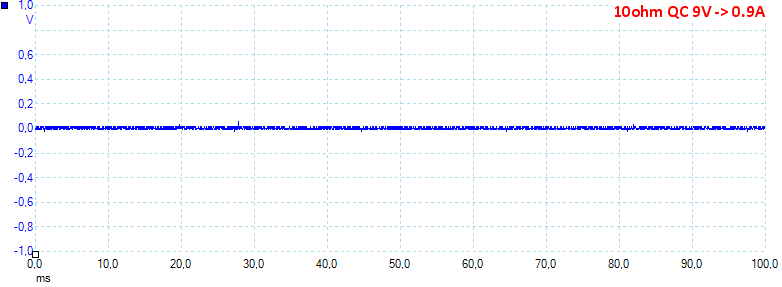
Noise at 0.5A output is 9mV rms and 99mVpp

Noise at 0.5A output is 3mV rms and 102mVpp
60W output
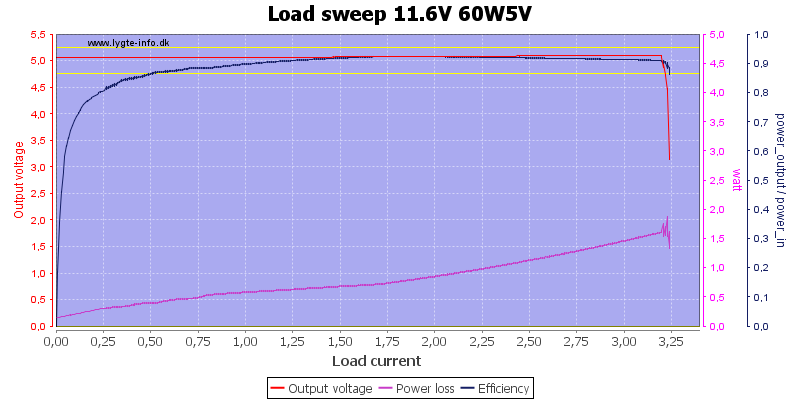
This output is rated for 3A at any voltage and the current limit is slightly above 3.2A, this is fine.
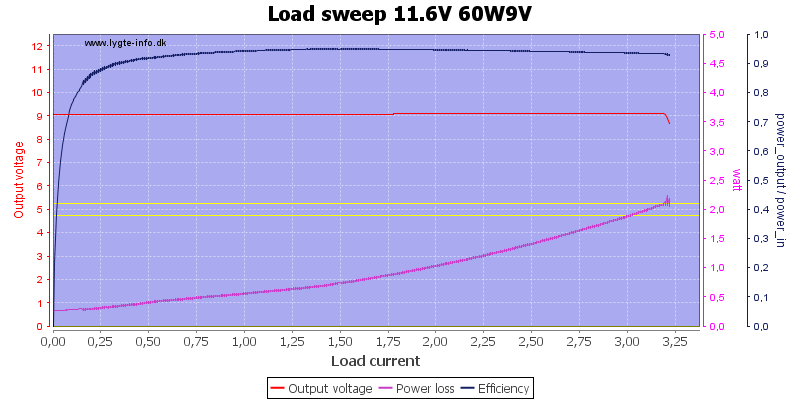
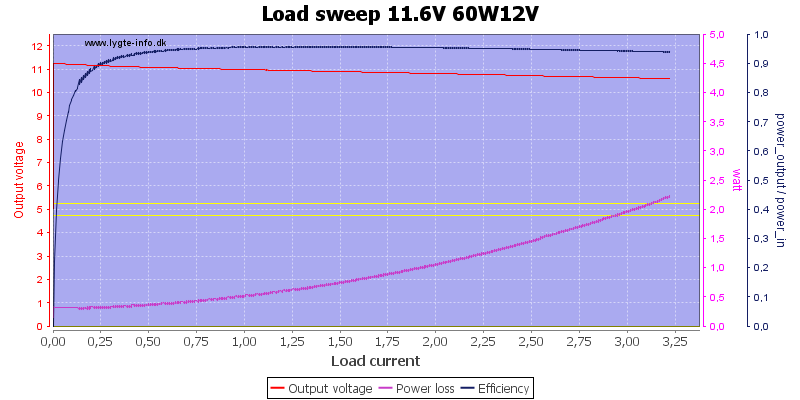
Without a boost converter the 12V output will be low with only 11.6V input.
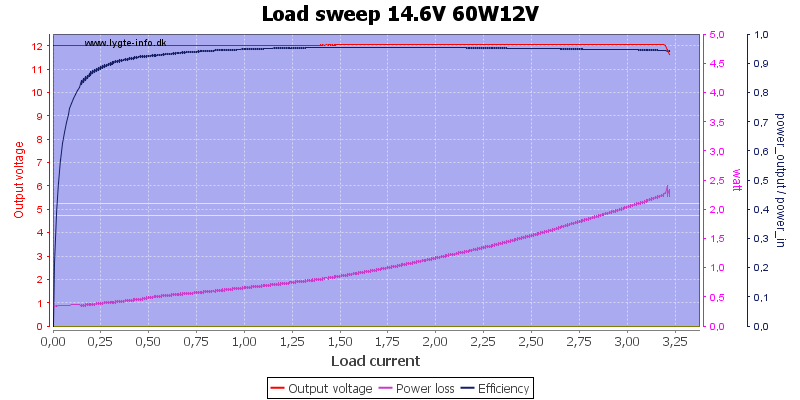
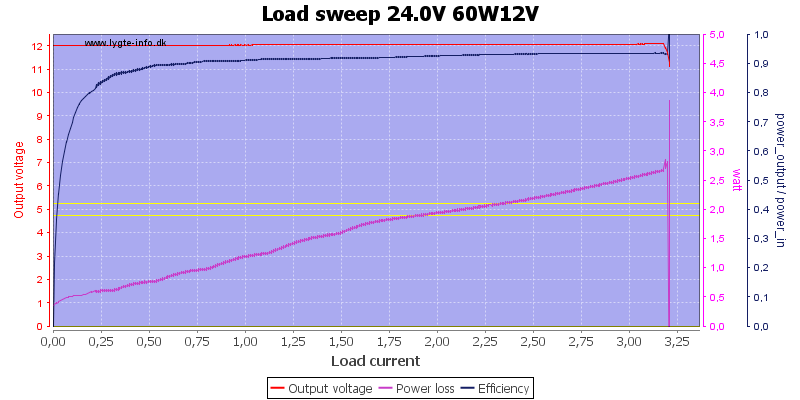
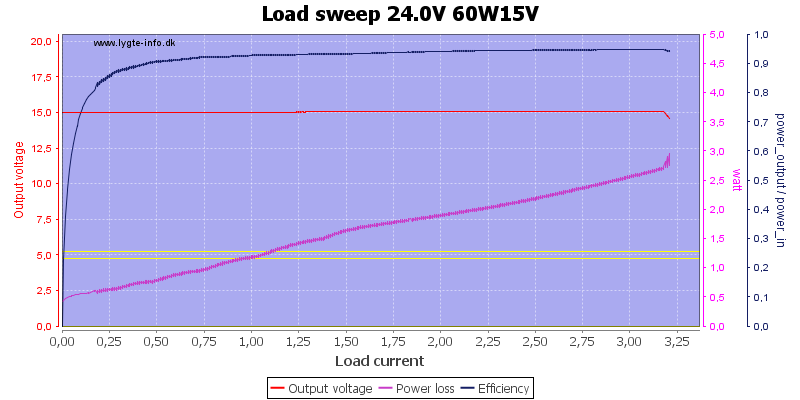
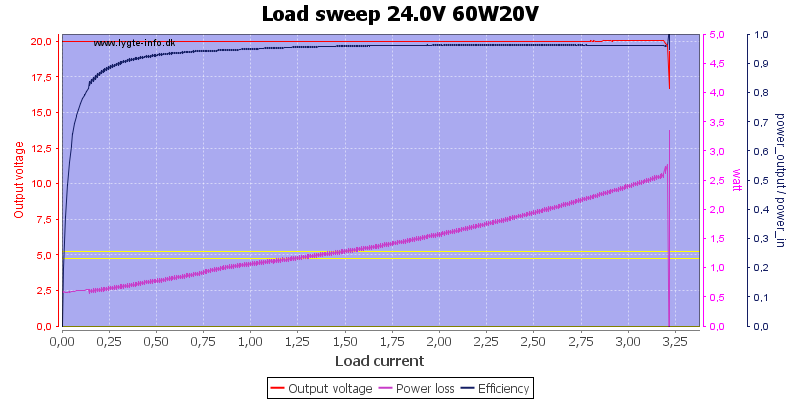
With enough input voltage the PD output can deliver 20V.
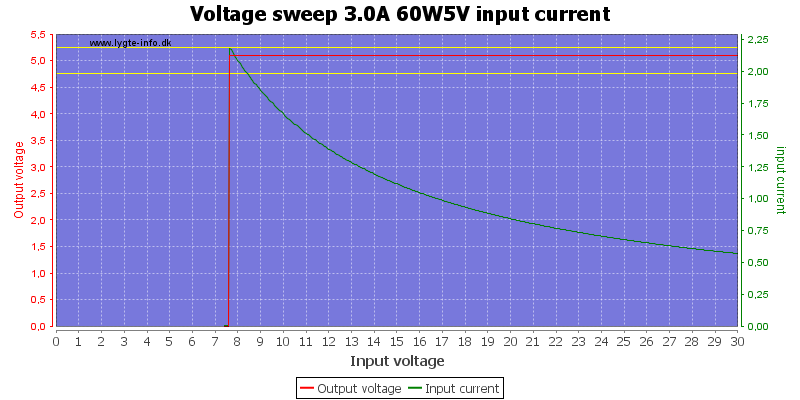
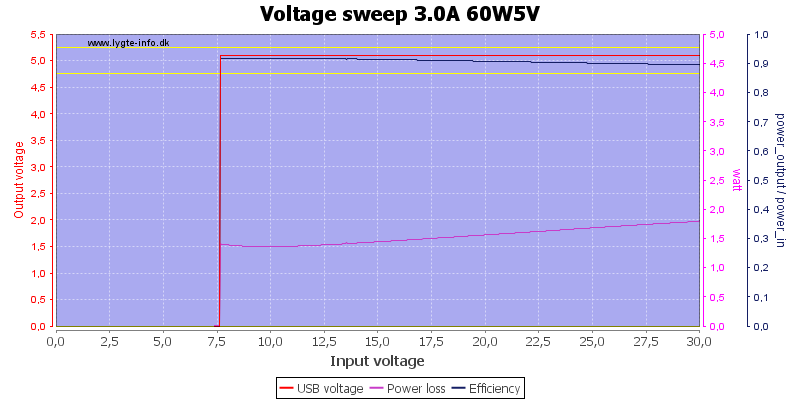
The 5V output works down to around 8V.
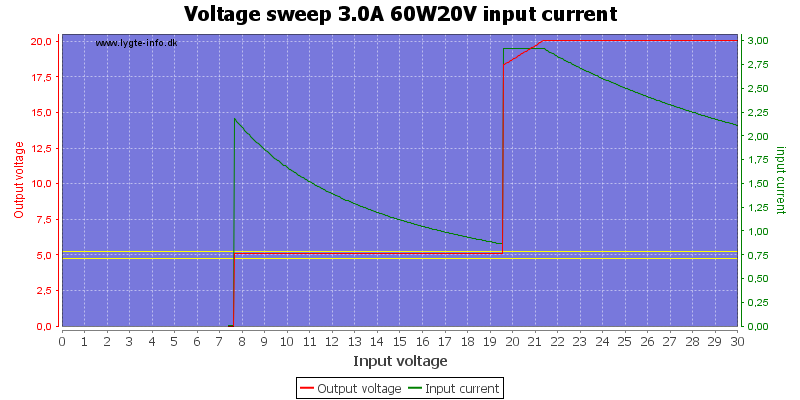
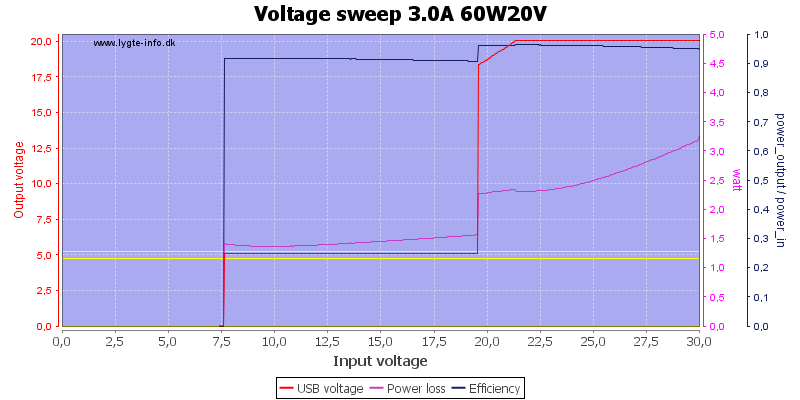
With 12V or higher input voltage the output will reset when voltage drops and change to 5V, I have listed the limits above.
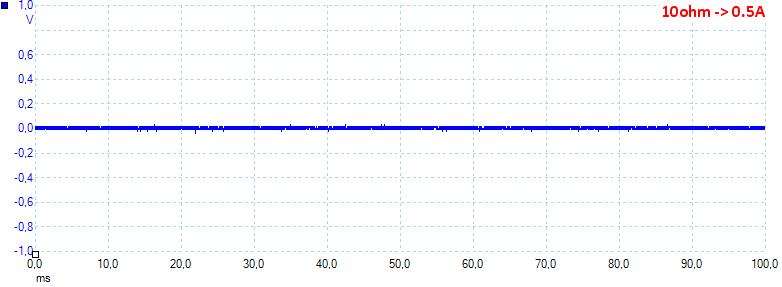
Noise at 0.5A output is 9V rms and 106mVpp
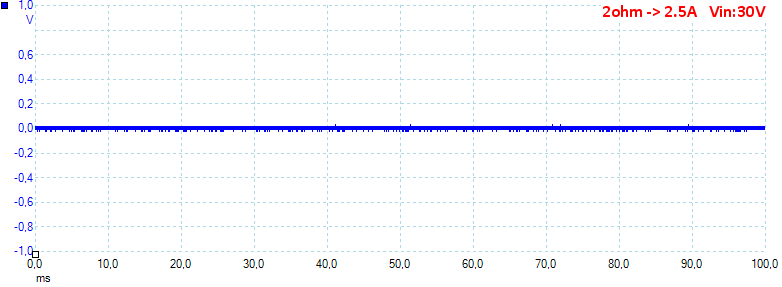
Noise at 2.5A output is 13mV rms and 113mVpp, I have very high input voltage here, it will usually increase the noise.

Noise at 1.2A output is 5mV rms and 243mVpp
Load test
First load test is 100W PD output at 20V with 3A, this is about 5.5A input at 12V
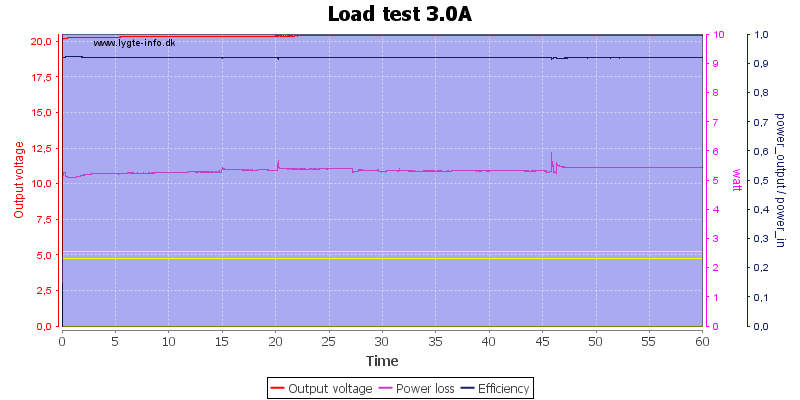
There is no problem maintaining the output for one hour.
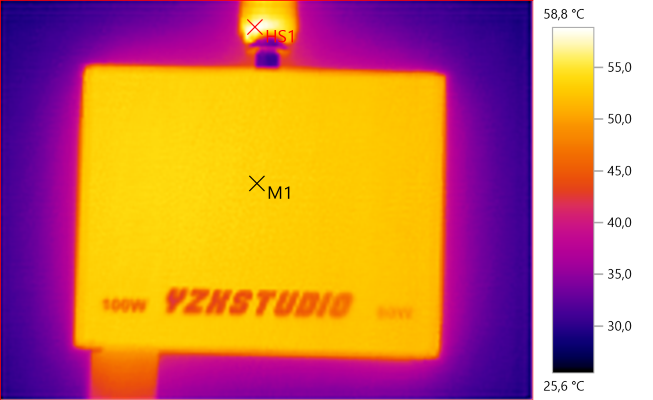
M1: 53.3°C, HS1: 58.8°C
The hottest part is the power connector. The box is warm, this is about acceptable for electronic parts.
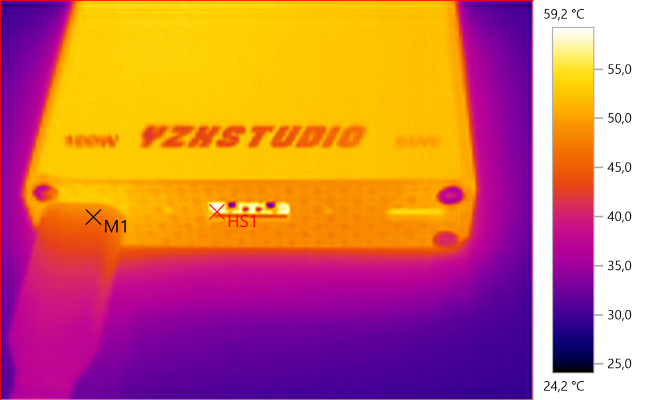
M1: 46.8°C, HS1: 59.2°C
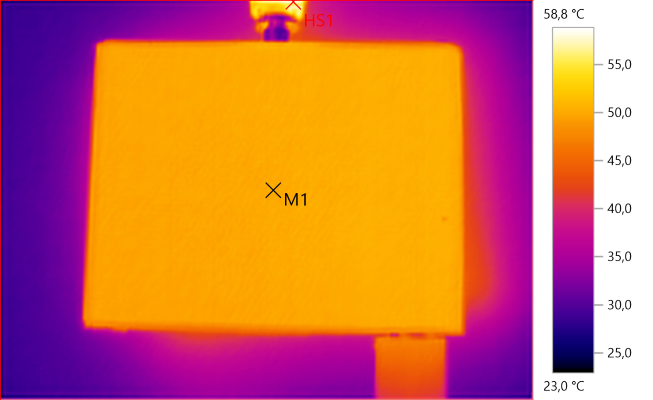
M1: 50.1°C, HS1: 58.8°C
Next load test is 100W PD output at 20V with 5A and QC output with 12V 1.5A, this is about 5.3A input at 24V
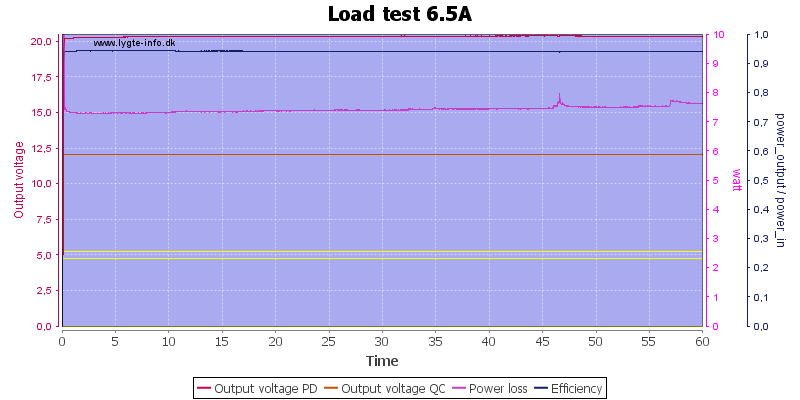
Again the charger can maintain the output for one hour.
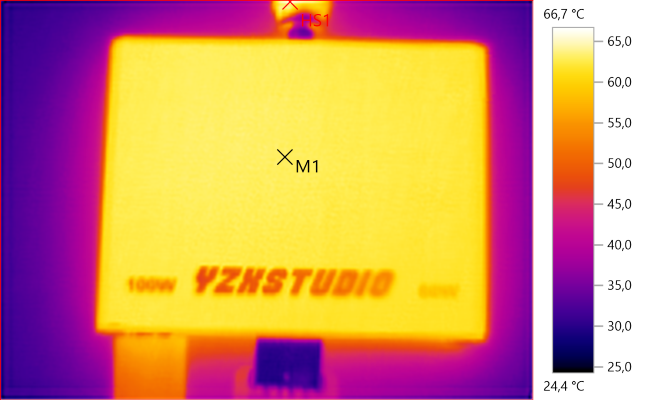
M1: 63.2°C, HS1: 66.7°C
And again the connector is the hottest part, but the enclosure is getting hot.
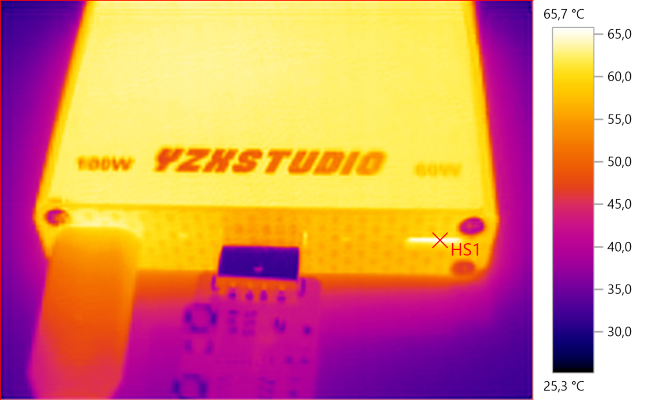
HS1: 65.7°C
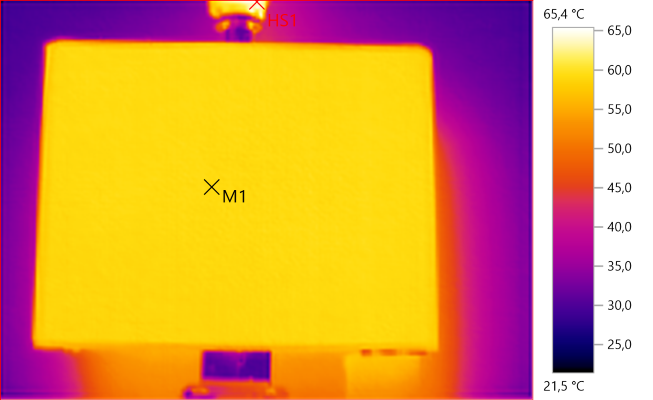
M1: 59.3°C, HS1: 65.4°C
Tear down
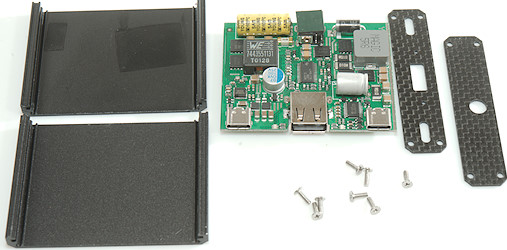
I had to remove eight screws to open the box. The circuit board was in slots and had to be slided out.
The side with the yellow capacitor is the 60W parts.
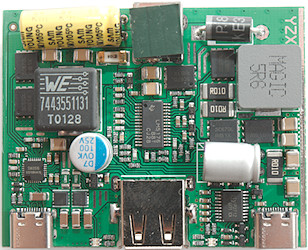
At the input is a 10A fuse and some capacitors, the yellow one is 160uF 50V. There is two switchers, one for 60W and QC, it uses the encapsulated inductor and two transistors (NTMFS5C670NL: 71A). The controller (SW3516) handles both PD and QC with a 5mOhm current sense resistor for each and a transistor to turn the output on/off for each.
The 100W PD output uses a buck/boost regulator (LM5176) with four external transistors (NTMFS5C670NL: 71A), this is controlled from a advanced PD controller (IP2712) that contains a microprocessor.
At the front is the USB connectors and two dual color leds (Red+Blue).
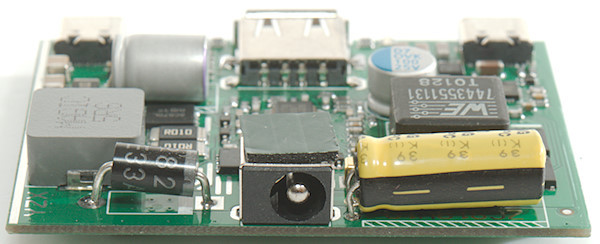
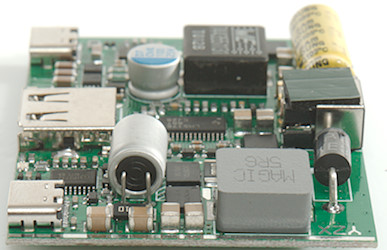
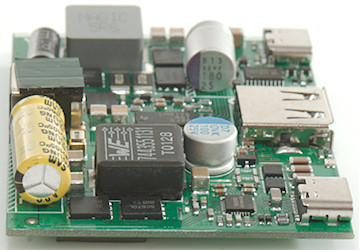

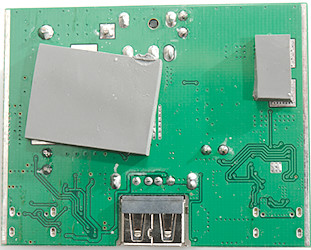
On the bottom is heat transfer pads below the inductors and transistors.
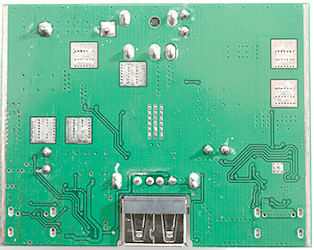
And nothing else.
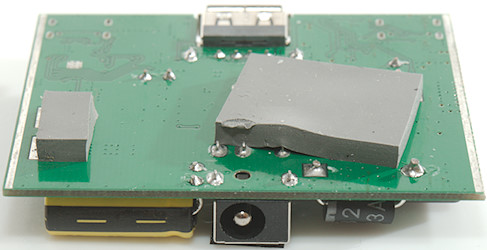
Conclusion
This is a very powerful USB PD charger, the secondary output can be either USB-A or an extra PD. It can deliver the rated power and a bit more. With a buck/boost converter on the 100W output it is not very depend on input voltage, but can always supply 20V, but I am a bit worried about the input connector, it will get very hot at 10A (12V car system input with 100W output).
The combined 60W PD and QC outputs has the usual problem with this kind of configuration: it is best only to connect one device.
I will call it a good PD charger with low noise and lots of voltages, the ability to supply 20V from a 12V car system is good, but some care must be taken with the input power lead and plug due when charging at high power.
Notes
Read more about how I test USB power supplies/charger
Compare car chargers and other DC supplied chargers

